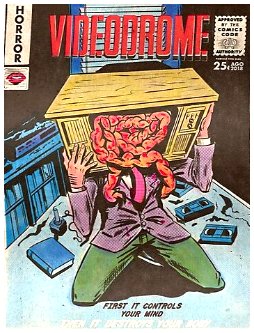cross-posted from: https://lemmy.capebreton.social/post/327322
The Trojan Room coffee pot was a coffee machine located in the Computer Laboratory of the University of Cambridge, England. Created in 1991 by Quentin Stafford-Fraser and Paul Jardetzky, it was migrated from their laboratory network to the web in 1993 becoming the world’s first webcam.
To save people working in the building the disappointment of finding the coffee machine empty after making the trip to the room, a camera was set up providing a live picture of the coffee pot to all desktop computers on the office network. After the camera was connected to the Internet a few years later, the coffee pot gained international renown as a feature of the fledgling World Wide Web, until being retired in 2001.
It went offline on August 22nd, 2001


Kodac invented it and predicted the shift to digital but execs buried it because it wouldn’t be good for their film business.
They did actually make lots of digital cameras and were a pioneer in their development. But they were always a film business, not a camera business. The camera was just the vehicle for recurring payments in the form of film, an early subscription model business basically. Selling a single digital camera without the years of film purchases after was way less profitable for them. Even with a full switch to digital their business would have needed to rapidly decrease in size and scale, shuttering most of their factories aimed at producing chemicals for film. There was no real way for Kodak to continue on in the massive form it once had no matter how the switch to digital happened. Even the remaining camera industry is still shrinking in size now compared to where it was with the advent of camera phones. Market cap of Kodak in the 90s was like 30 billion not even accounting for inflation and higher valuation of stock in the 30 years since, compare that to something like Nikon who has a current market cap of 3.71 billion. So yeah, the executives were right to avoid transitioning if the goal was to maximize profits for share holders, and they’re a corporation so that’s definitely their goal, right or wrong.
Your’re mixing market cap and profits, but that’s the wrong comparison anyway.
There’s no reason Kodak couldn’t invest in sensor development while keeping film production going - their expertise in colour and image processing would’ve given them a major advantage on the sensor market.
Nikon was never a film company so they make for a poor comparison anyway, their expertise is in lenses. Fujifilm is a more direct competitor and a better match, they pioneered digital cameras and diversified their business while still producing film and as a result are still worth 22b today.
They would have been better off being a 3.71B company now
Now, yeah they would, but that would have required giving up the massive profits they were still making at the time just to become a less valuable company faster. Past shareholders don’t care about future shareholders after all.
Would they?
It takes 8 years of being a 3.71B company to make the money of just that one single year of being a 30B company. Now, if the next year after that peak were 26B, then there’s another 7 years. Just two years at their peak is better than 15 years at 3.71B. Now do that area under the curve for 30 years. Yes, it is down to near zero now; but it was so high in the past that it would take a very long time at 0 profit to make up for it.
Also, I had a digital camera in 2001. They absolutely sucked and were only fun for nerds like me. They did not replace the film camera I had. So Kodak could have focused on selling a niche product that people wouldn’t have wanted for 15 years or ignored a very long term future profit to make a shitload then.
But imagine if they had not just the DSLR market today, but the entire smartphone camera market.
Yep, people in Rochester were pissed to learn this. Instead of riding the wave, Kodak execs turned the company into a donkey.
Definitely not the greatest of Kodak moments
Fwiw, the digital cameras they invented were rather garbage. Most were up until a couple decades ago and didn’t even really become serviceable until about 10-15 years ago.
But Kodak never wanted to get into the digital business and did everything they could to stop it. They made most of their profits from selling film and the equipment and chemicals to develop them.